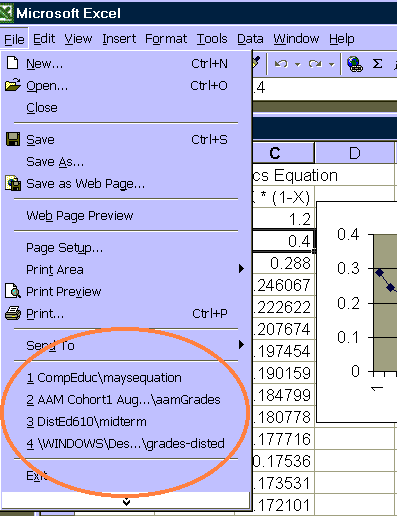See and Open
If you know that your file is in a certain folder on a certain disk, the task of finding and opening files is easy. For example, click the A drive to find files on a floppy disk. Click the C drive to find folders and files on the hard drive. There could be many other drives, but the procedure of clicking on an alphabet number to open the drive on a local computer or across a network remains the same. Develop a pattern of always saving to a certain folder or of carefully giving your folders meaningful names for different projects or activities. If you put things away logically, using some logic to find the files makes life much easier. One place to start looking for files is by clicking on the My Computer icon and from there the appropriate drive. All files present will appear in a list.A second place to start is from within the application, clicking on
File, then Open and then selecting the drive. If taking this second approach,
the file list that appears will only show the files that have been created
by that application. However, there is a pulldown menu near the file name
display that allows other file formats to be displayed.
But sometimes, or all too often, you saved in haste and did not notice where the file was being placed. All too often the file fell into some place you never expected.
Sometimes after finding the file, the file will not open in the application
that was expected to handle it, but will open in another similar application.
To test this, start up another application, then select File and Open the
file in question. If the application can handle it, the file will open.
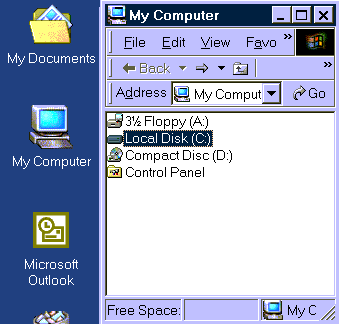
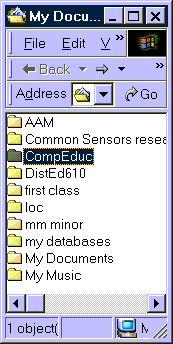
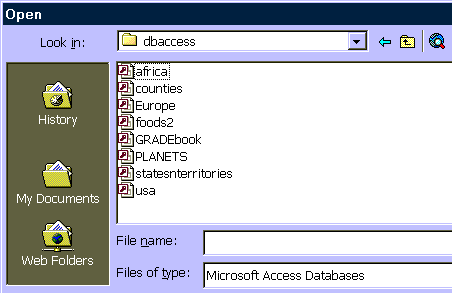
Use the Operating System to Find the File
With ALL operating systems though there is a built in system for finding lost files. For this to work, you must be able to remember the file name or some part of the file name you used or some pattern words in the content of the file or document. If you saved it, it is there. There are two possible approaches. The first uses features within the operating system. The second uses file finding features within the application.Click on Start and move up to Search. From there, select For Files or
Folders. Note the other options for finding things that are there with
Files or Folders. Type in the file name or text phrase and it will search
thru your folders until it finds the file you need. You can also type in
just part of the file name. For example, if you were looking for a picture
in gif format, you could just enter .gif and it would find all file names
that ended with those characters and allow the user to select the one wanted.
Once found, you can then click on the file name, which starts its application,
and then resave the file to a location that you can remember.
Several search elements can be combined. In the example screen shoot to the right, an AND search has been set up. In this AND search, several conditions (five) must be true for it to find or retrieve the file:
Other criteria could be used as well. The picture also shows check
boxes for file size and other advanced options.
The Windows operating system also has another application for finding files called Windows Explorer. It can always be found from Start/Programs/ Accessories, but is often found on the desktop or in the task bar at the bottom of the page. Look for a folder symbol with a magnifying glass.
Though it does not allow for complex searching parameters, it does display the folder names on one side and the files within on the right.
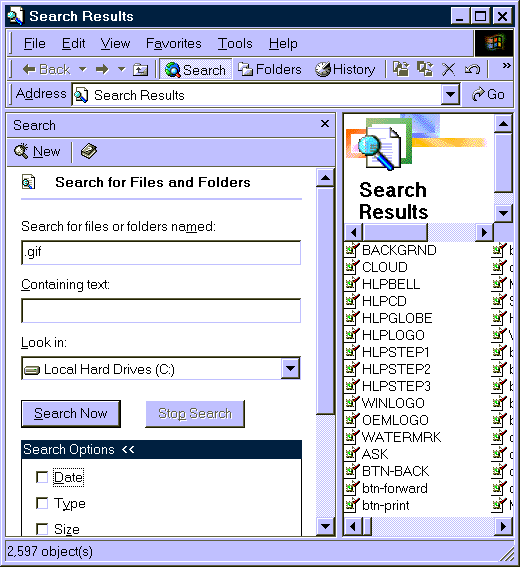
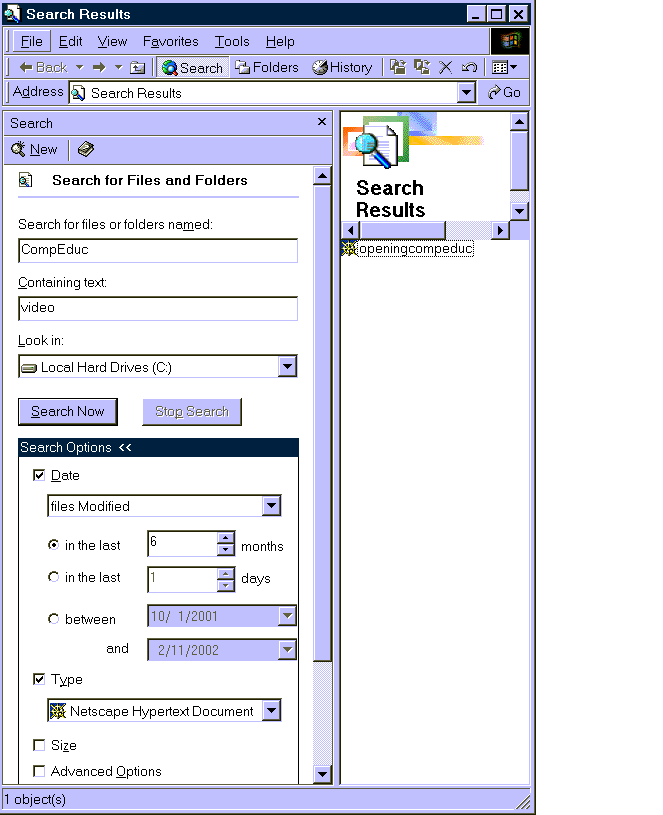

Use the Application to Find the File
Many applications will keep links to a list of the last 3 or few files that you have you used. Start up the application and look under File. At the bottom of this pull down menu will be numbered files in order of most recently used. This means that the most recent file you were working with will be at the top of the list. Click on it and your file will appear. Try this with Excel or Word for example. Then you can save the file to a location that you will remember.